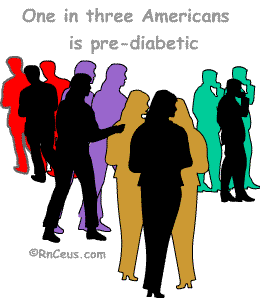 The 2020 National Diabetes Statistics Report reviewed data through 2018. In 2018, 34.2 million Americans, or 10.5% of the population, had diabetes. Nearly 1.6 million Americans have type 1 diabetes, including about 187,000 children and adolescents.
The 2020 National Diabetes Statistics Report reviewed data through 2018. In 2018, 34.2 million Americans, or 10.5% of the population, had diabetes. Nearly 1.6 million Americans have type 1 diabetes, including about 187,000 children and adolescents. Diabetes mellitus (DM) encompasses a heterogeneous group of disorders that result in chronic hyperglycemia. The hyperglycemia occurs due to insufficient insulin production and/or resistance to the effects of insulin. Absent the effect of insulin, cells of the liver and skeletal muscle are unable to efficiently take-up and store excess glucose leading to hyperglycemia.
 The 2020 National Diabetes Statistics Report reviewed data through 2018. In 2018, 34.2 million Americans, or 10.5% of the population, had diabetes. Nearly 1.6 million Americans have type 1 diabetes, including about 187,000 children and adolescents.
The 2020 National Diabetes Statistics Report reviewed data through 2018. In 2018, 34.2 million Americans, or 10.5% of the population, had diabetes. Nearly 1.6 million Americans have type 1 diabetes, including about 187,000 children and adolescents.
More people are developing type 1 and type 2 diabetes during youth, and racial and ethnic minorities continue to develop type 2 diabetes at higher rates. Likewise, the proportion of older people in our nation is increasing, and older people are more likely to have a chronic disease like diabetes. https://www.cdc.gov/diabetes/pdfs/data/statistics/national-diabetes-statistics-report.pdf
Chronic hyperglycemia of DM is a leading cause of cardiovascular disease, blindness, kidney failure, and lower-limb amputation.
Types of Diabetes
Instant Feedback:
Latent Autoimmune diabetes develops during pregnancy.
©RnCeus.com